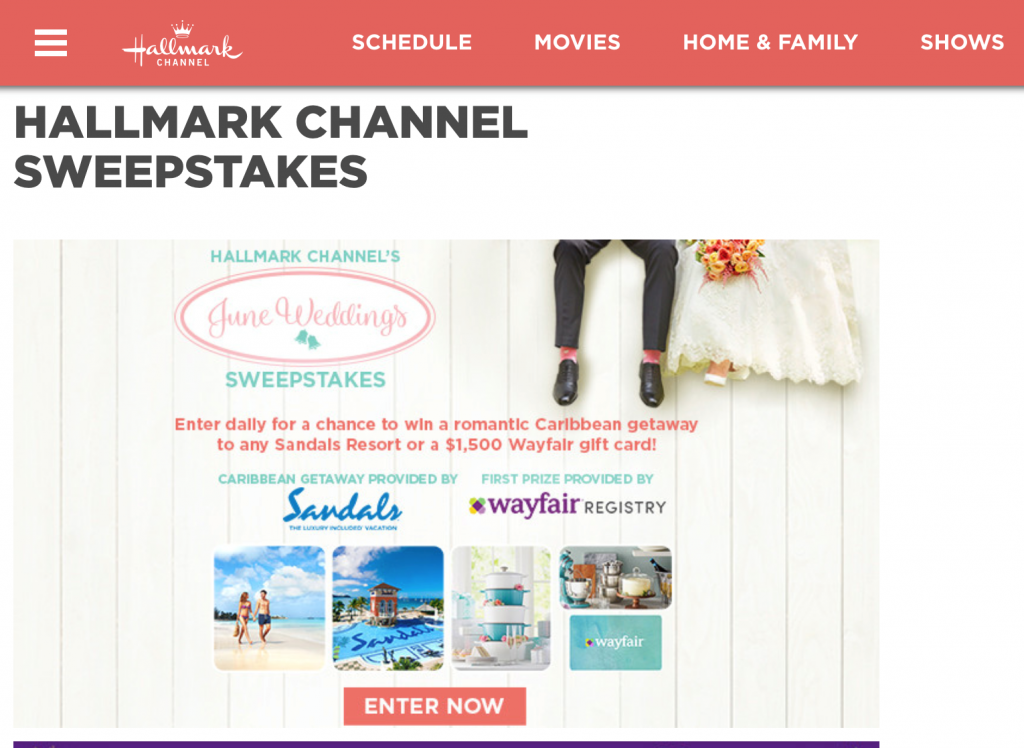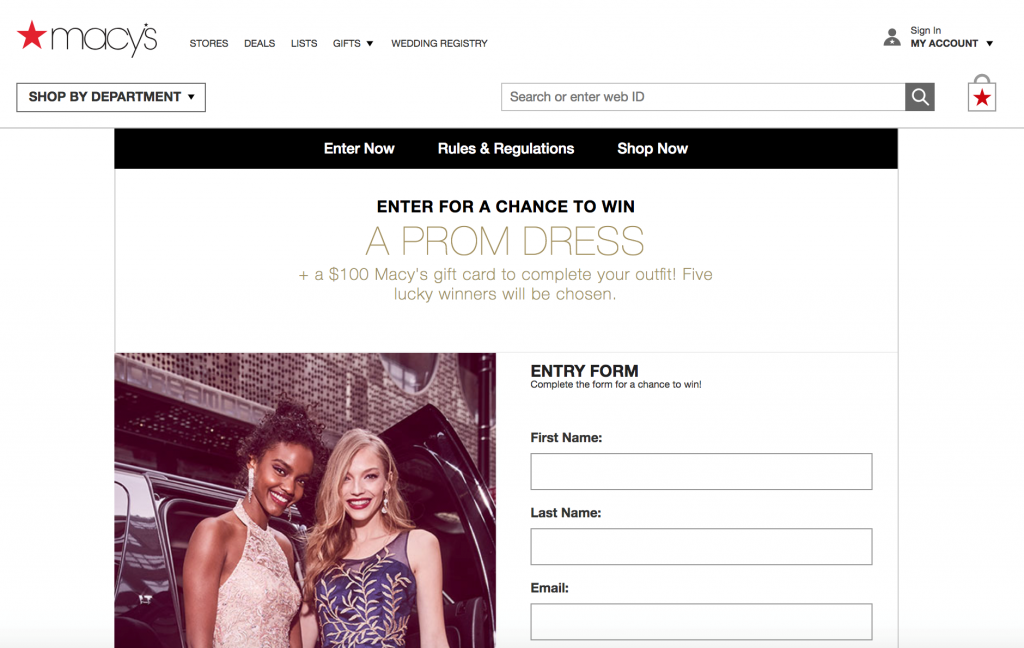A Dirty Word?
Let’s start with a bit of education on the topic. When I hear the word sweepstakes the first image is the memorable moment when an unknowing winner opens their front door to be greeted with a life-changing check. For those of you younger than me… you can google it.
Per Wikipedia, Sweepstakes are “a type of contest where a prize or prizes may be awarded to a winner or winners.” Who doesn’t want a prize, right?! Well when sweepstakes began, they started as a lottery related to products that a company was selling. Because this matched some of the criteria for the lottery definition, the FTC and FCC got involved and updated the lottery laws to include more specifics related to sweepstakes, AKA the anti-lottery laws leading sweepstake managers and legal to add the ever-present “No purchase necessary” language to appease the new rules.
The reality is, just like anything we do in the marketing world, everything can be used for good or evil, depending on who is wielding the power and how it is being used. In my opinion (IMO) Sweepstakes haven’t gone to the dark side, they just need a strategic marketing Jedi to help guide them to make sure they are used for good. Let’s just make sure whatever we run doesn’t result in the consumer being buried under loads of unwanted direct mail, bothersome phone calls and spam email.
Difference Between Sweepstakes and Contest
Sweepstakes by definition are games of chance or luck, while Contests are games of skill. Typically contest winners are selected by a third-party or judges using a set of criteria, whereas sweepstakes winners are randomly selected.
How to Run a Sweepstakes for Good
I’m starting with the assumption that you have already defined your business objectives and outlined a strategy that will be supported by this tactic. So, you know exactly why you are doing it for your business, now you just need to create the sweepstakes plan.
Step 1: Pick the Prize – Do Your Homework
It would be a shame to put a bunch of effort behind a sweepstakes only to find out that your target audience doesn’t need or want the “prize.” Gather insight on current customers or your target audience. Ask the sales team what these individuals like and try to create a short list of prize ideas. It may even make sense to select a small group of customers for an email survey, asking them what types of prizes would really be of interest to them. Note of advice – a lot of sweepstakes may include a prize of “free services.” If you are B2B, keep in mind you are working with a person on the other end who may not see the personal benefit of saving their company money (I know, hard to believe). So, while giving your services away as the prize is probably the least cost prohibitive, it may not result in the excitement and buzz that you were hoping to incite. Again, this all goes back to your objectives and what you are trying to achieve.
Step 2: Choose the Right Time
Whether this is a seasonal product or perhaps you know consumers are strapped for cash around the holidays, you need to be thoughtful and strategic about when and how long you run your sweepstakes. Keep in mind for most states, you are required to also allow individuals an option to mail in their entry, so make sure you allow enough time for those to get in and get managed by your team. A few other items to think through – if you are B2B, you may want to take into account the calendar for your target industry, so if their fiscal year starts in August, it will be risky for you to run a late summer sweepstakes because people may be too busy at work to sign up.
Step 3: Define the Plan
What channels you choose should be based on the target audience and where you can easily intersect with them during their day to day life. Make sure you think ahead. Are you about to increase awareness of your brand and gain access to a bunch of people you didn’t have access to before how will you engage them? Are you asking them to opt-in to your monthly newsletter? Or follow you on social?
Questions to ask yourself:
- What is the sweepstakes goal? New followers? Increase in newsletter subscriptions?
- Can people enter more than once?
- Can they get a second entry if they share the sweepstakes?
- Are there any incentives to support people sharing the sweepstakes? Keep in mind individuals may assume (correctly) that the more people that enter the less likely they are to win, so you will want to build logic around why they would want to share with friends and family?
- Who is allowed to enter? How will they find out about it?
- Are there other partners that might be willing to also promote your sweepstakes, if so it may be important to engage them early on.
- What is the internal structure of the sweepstakes management team? How much time realistically do you need to sort through entries and make sure you have everyone accounted for and select the winner?
- How will you communicate to the winner?
- How will you communicate to the non-winners?
- How will you promote the sweepstakes winner post sweepstakes close?
Step 4: The Real Winner
The real winner is you and your business. If you did everything right (or at least mostly right), you should now have access to new contacts and ways to engage with them (assuming they opted-in to future communication with you). Now you need to make sure your marketing plans accommodate for these new friends and outline opportunities to educate them about your product and offer other resources that may be of interest to them to keep them engaged.
Should I Run a Sweepstakes?
Like any tactic it only makes sense if it ladders back to your strategy and can help support meeting your business objectives. If you have any of the following business objectives included in your business plan, sweepstakes may be worthy of consideration:
- Current customer engagement and retention:
In some cases, using sweepstakes to reward current customers helps support retaining and engaging current customers.
- Increase awareness of your service or product:
If you are targeting individuals or businesses at the top of the funnel who may not yet be aware of your product or service, creating and promoting a sweepstakes may help to get your name out there. A sweepstakes will probably not lead to an immediate closed deal; however, it will allow you to reach people you may not have known before and allows you an opportunity to have them opt-in to your newsletters and ongoing communication, which at least opens the door
Sweepstakes Examples
Here are a few different types of sweepstakes that created buzz, and bonus points for the brands, included information capture on people who were interested in the sweepstakes:
Hallmark
Hallmark created a sweepstakes enticing people to enter to win a Caribbean trip or a $1500 Wayfair gift cards.

Macy’s
Macy’s held a sweepstakes to win a prom dress and a $100 gift card to complete the outfit. To enter, contestants just had to fill out the entry form.

Want to learn more about connecting email and social media to your sweepstakes strategy? Give us a ring or contact us below.



